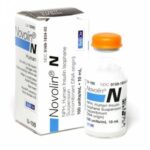How To Soften Dog Tartar
How to Soften Dog Tartar: Expert Tips and Tricks
If you’re a dog owner, you know how important it is to take care of your furry friend’s teeth and gums. However, even with regular brushing and dental checkups, some dogs can develop tartar that hardens into plaque and calculus. This can lead to bad breath, gum disease, tooth decay, and even systemic health problems. So, what can you do to soften dog tartar and prevent these issues? In this article, we’ll share some effective methods that have worked for many pet parents and veterinarians.
First of all, let’s define what tartar is and why it forms in dogs’ mouths. Tartar (also called dental calculus) is a mineralized deposit that accumulates on the teeth from saliva, food particles, and bacteria. It starts as a soft film of plaque that adheres to the tooth enamel and irritates the surrounding tissues. If not removed by brushing or chewing, the plaque can harden into tartar within 24-72 hours. Once tartar forms, it cannot be brushed away or dissolved by water alone. Instead, it needs to be physically removed by a professional cleaning under anesthesia or by using special tools at home.
However, before you resort to these options, there are several ways to soften dog tartar that may help loosen it up and make it easier to remove. These methods are not guaranteed to work for every dog or every case of tartar buildup, but they are worth trying as part of your dental hygiene routine.
1. Add enzymes and probiotics to your dog’s diet
Enzymes are natural substances that break down food particles and help digest nutrients. Probiotics are beneficial bacteria that support gut health and immune function. Both enzymes and probiotics can also benefit dental health by reducing inflammation, improving digestion, and inhibiting harmful bacteria that cause plaque and tartar. You can buy enzyme supplements and probiotic treats that are specifically designed for dogs, or you can add certain foods to your dog’s diet that are rich in these nutrients. Some examples of enzyme-rich foods are raw meat, organs, fruits (such as pineapple and papaya), and fermented vegetables (such as sauerkraut and kimchi). Some examples of probiotic-rich foods are yogurt, kefir, raw goat milk, and bone broth.
2. Use natural chews and toys
Chewing is a natural behavior for dogs that serves many purposes, including cleaning their teeth and exercising their jaws. However, not all chews and toys are created equal when it comes to dental health. Some may be too hard or abrasive and actually damage the teeth or gums. Others may contain toxic ingredients or preservatives that can harm the dog’s overall health. Therefore, it’s important to choose natural chews and toys that are safe and effective for your dog’s specific needs. Some examples of natural chews that can help soften tartar are:
– Raw bones (such as beef marrow bones or chicken necks) that provide both chewing exercise and nutrition
– Antlers or horns (from deer, elk, or moose) that are durable but not too hard
– Bully sticks or pizzles (made from beef or lamb) that are long-lasting but not too salty
– Himalayan yak chews or cheese blocks (made from hardened yak milk) that can be microwaved or soaked in water to soften them up
3. Brush with baking soda and coconut oil
Brushing your dog’s teeth with a toothbrush and toothpaste is still the gold standard for preventing tartar buildup. However, some dogs may resist this procedure or have sensitive gums that bleed easily. In such cases, you can try using a homemade paste made of baking soda and coconut oil. Baking soda (sodium bicarbonate) is a mild abrasive that can help remove surface stains and neutralize odor-causing acids. Coconut oil is a natural antibacterial and anti-inflammatory agent that can soothe the gums and freshen the breath. To make the paste, mix equal parts of baking soda and melted coconut oil (you can warm it up in the microwave or on a stove). You can also add a few drops of peppermint or cinnamon essential oil for flavor. Then, dip your finger or a soft-bristled toothbrush into the paste and gently massage your dog’s teeth and gums for a few minutes. Rinse with water or let your dog lick off the excess paste.
4. Offer filtered water and herbal rinses
Water quality can also affect dental health, as some tap water sources may contain high levels of minerals or chemicals that contribute to tartar formation. Therefore, you may want to consider offering your dog filtered or bottled water that is free of impurities. Additionally, you can make an herbal rinse that you add to your dog’s drinking water or use as a spray on their teeth and gums. Some herbs that have been traditionally used for oral hygiene are:
– Chamomile: anti-inflammatory, antiseptic, and soothing
– Calendula: antimicrobial, healing, and pain-relieving
– Sage: antifungal, anti-plaque, and stimulating
– Peppermint: freshening, cooling, and antibacterial
To make an herbal rinse, steep one or more herbs in boiling water for 10-15 minutes, strain the liquid, let it cool down, and store it in a clean bottle or jar in the fridge for up to one week. You can dilute it with water if needed before using it.
5. Visit your veterinarian regularly
Finally, even if you try all these methods to soften dog tartar at home, it’s still important to see your veterinarian for regular checkups and cleanings. A professional dental cleaning under anesthesia is the most effective way to remove tartar that has hardened into calculus and to detect any underlying dental or systemic issues that may affect your dog’s health. Your veterinarian can also give you personalized advice on how to improve your dog’s dental hygiene and prevent future problems.
In conclusion, softening dog tartar is not a one-size-fits-all solution, but a combination of different approaches that suit your dog’s individual needs and preferences. By adding enzymes and probiotics to their diet, offering natural chews and toys, brushing with baking soda and coconut oil, using herbal rinses, and visiting your veterinarian regularly, you can help keep your dog’s teeth and gums healthy and happy. And remember, dental hygiene can be fun and rewarding for both you and your furry companion! So, go ahead and make some jokes, sing a song, or play a game while you’re brushing or chewing together. Your dog will appreciate the extra attention and love.



